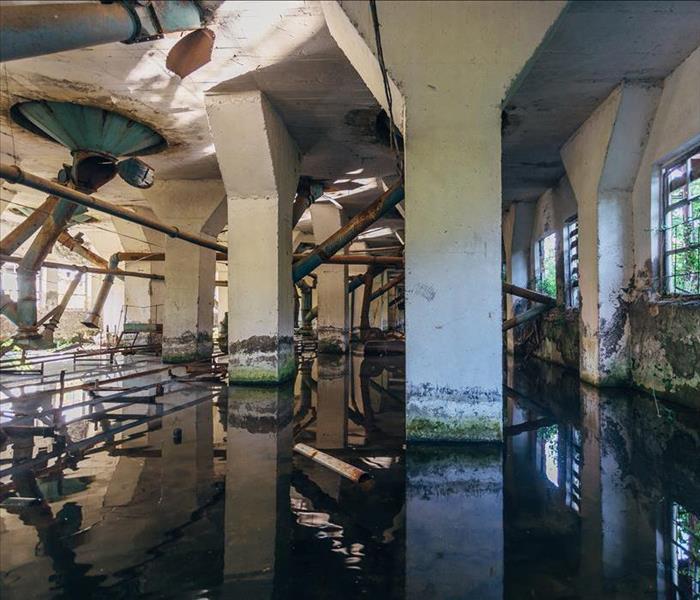What To Do if a Flood or Toilet Overflow Causes a Category 3 Water Loss
7/30/2022 (Permalink)
Some causes of water damage, such as a pipe break, are relatively safe. The liquid that comes from main lines is fairly clean. However, other water losses, such as a toilet overflow, can cause dirty, unsanitary fluid to enter your business. These are considered Category 3 water losses, and they require the assistance of experienced remediation professionals in Ogden, UT.
Category 3 Damage Comes From Flood Water or Sewage
There are three primary types of water damage. Category 1 damage results from sanitary water sources. If you accidentally inhale, touch or ingest this water, you will not be at risk of substantial harm. Common sources of Category 1 damage include:
- Broken pipes
- Overflowing sinks
- Melting snow and ice
- Malfunctioning drinking fountains
Meanwhile, Category 2 losses occur when water with potentially dangerous contaminants enters your property. The microorganisms in this gray water could be harmful to animals and people.
Water from a broken aquarium is considered Category 2. Hydrostatic pressure seepage from a basement falls into this category, as well. A toilet overflow may also qualify as Category 2 if the toilet only contains urine.
Category 3 Water Losses Are the Most Severe.
Category 3 water is highly contaminated, and any items that contact this water must be removed and dried immediately. Flood water following a rainstorm or hurricane is usually Category 3. That is because it often mixes with sewage or river water before entering your property. Toilet water that contains feces is considered Category 3, as well. If not properly addressed, Category 1 or 2 damage could end up Category 3 over time.
Why Category 3 Damage Spreads Quickly
Once the water comes into your building, the contaminants feed off the flooring and walls. This quickly increases the harm to the property. The water may also seep deep into your carpet, furniture and other assets. If your premises is warm or humid, mold and other fungi could spread even more swiftly.
How To Address Category 3 Damage
Just touching Category 3 water could be dangerous. This type of water damage also must be addressed right away. Local remediation professionals should know how to handle the situation. You should thus contact them as soon as it is safe to do so.
As you wait, do not turn on any electronic devices that have contacted the water. You may want to shut off the electricity until the property is dry.
Once the experts arrive, they should extract the water from the premises and remove any affected items so they can be dried. Dehumidifiers and other similar equipment can eliminate additional water that may not be readily visible.
The pros should then utilize a variety of cleaning techniques to restore your valuable assets. They can use specialized equipment to sanitize everything, as well. Antibacterial and antimicrobial treatments should eliminate the contaminants from your property. Meanwhile, industrial air scrubbers can remove the foul odors the contaminants left behind.
Category 3 water damage is the most severe. It typically occurs when sewage or flood water seeps into your home. Because Category 3 water is so dangerous, it should only be handled by remediation professionals.




 24/7 Emergency Service
24/7 Emergency Service
